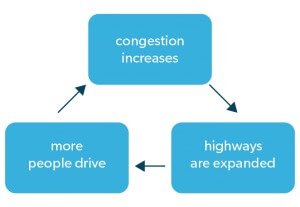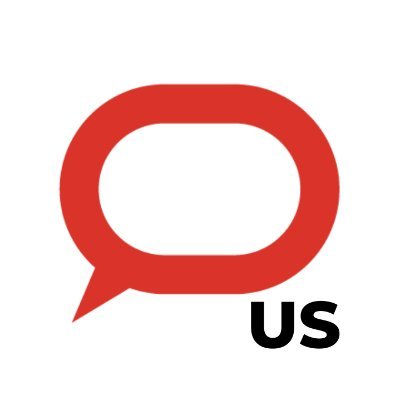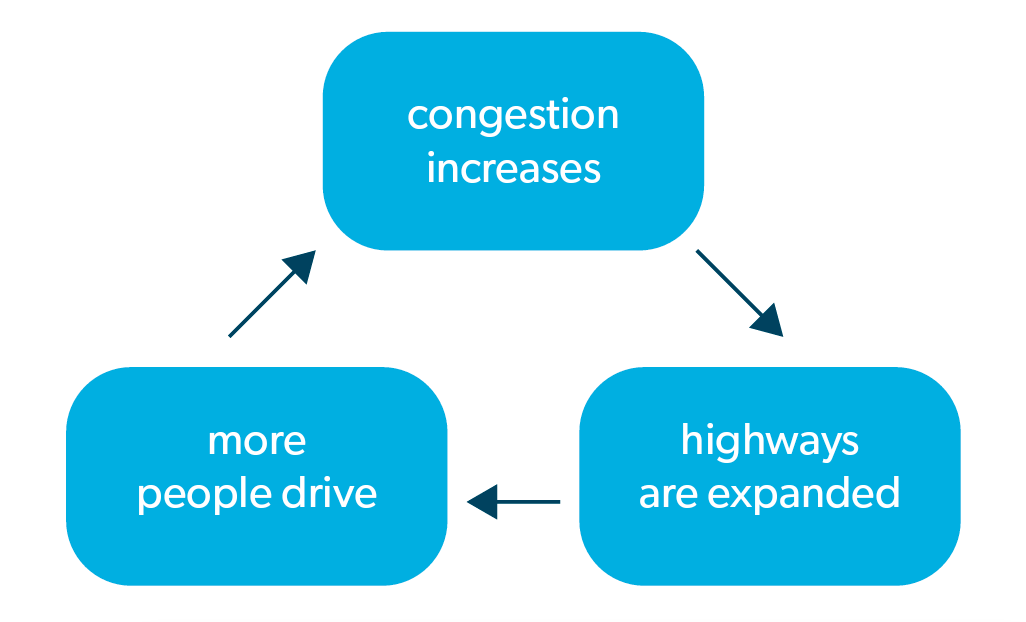Introduction
A transportation system provides mobility for a community’s residents. A well-functioning system expands job options and enables businesses to move goods in a timely and efficient manner, lowering business costs. All of these benefits help to promote greater economic activity and higher living standards. The extent to which these advantages are realized hinges on a transportation system’s level of congestion.
Most cities in the United States face serious highway congestion problems. The most common policy responses to congestion issues are to expand highway capacity and to spend more on public mass transit systems. Despite these efforts, congestion continues to worsen. In 1996, congestion cost Americans $93 billion in wasted time and fuel. By 2014, that figure had grown to $160 billion, a 72 percent increase over the period.1David Schrank et al., 2015 Urban Mobility Report (Texas A&M Transportation Institute, 2012). These figures are in constant 2014 dollars. While highway expansion increases the volume of vehicles that can travel on the highway, which benefits the community, it does a poor job of controlling congestion.
The primary reason why additional highway capacity fails to make a lasting, significant dent in congestion is that, as highway capacity increases and driving travel times fall, more drivers are attracted to the highway. These behavioral adjustments tend to make congestion relief temporary. This behavioral response is referred to as the fundamental law of congestion, also known as induced travel demand. 2Anthony Downs, “The Law of Peak-Hour Expressway Congestion,” Traffic Quarterly 16 (1962): 393–409.
This Research in Focus piece explains why highway expansion has, at best, only a limited impact on congestion. It begins by reviewing the existing literature on this topic and concludes with policy recommendations that explore better ways to address congestion. One of the options explored is variable pricing.
What Lies Behind Induced Travel Demand?
A key principle in economics is that people respond to incentives. For example, when gasoline prices rise, people change their behavior and reduce their gasoline consumption. Some people purchase vehicles that get more miles per gallon. Some increase carpooling or switch to mass transit, even though these transportation options are less convenient. Faster highway speeds that result from highway capacity expansion also create incentives that alter commuting patterns. Faster highway speeds lower the cost of taking shopping trips and work-related trips.
As the cost of each trip declines, more trips are taken. The effect becomes larger as time passes, leading to greater increases in vehicle traffic. As noted above, this behavioral response to highway expansion is referred to as induced travel demand.3 Jan K. Brueckner, Lectures in Urban Economics (Cambridge, MA: MIT Press, 2011), chapter 5; and Robert Krol, “Can We Build Our Way Out of Urban Traffic Congestion?” (Policy Paper 2019.001, Center for Growth and Opportunity at Utah State University, March 2019). Figure 1 illustrates how induced travel demand works.
Figure 1. How Induced Travel Demand Works
Induced travel demand has several components. First, lower transportation costs create an incentive for drivers to take more and longer trips. Second, some individuals who used to use mass transit switch to driving their cars. Third, some drivers change the timing of their trips and the routes they take. Finally, induced travel demand can cause the places people live, work, and shop to relocate nearer to the expanded highway, increasing traffic volume.4Robert B. Noland, “Relationships between Highway Capacity and Induced Vehicle Travel,” Transportation Research Part A: Policy and Practice 35 (2001): 47–72.
Some additional trips may result from population growth and increases in economic activity that occur independent of highway expansion. Such factors are not considered to be part of induced travel. The bottom line is that expanding highway capacity lowers driving costs, resulting in only temporary relief from highway congestion.
How Large Is the Induced Travel Effect?
Transportation researchers have tried to quantify the induced travel associated with highway expansion. They estimate the percentage increase in vehicle miles traveled that results from a 1 percent increase in the lane miles on a particular highway or in a defined geographic area, such as a city or state. This value is called the induced travel elasticity.
The magnitude of induced travel elasticity indicates whether highway expansion will ultimately reduce congestion. If the estimated elasticity equals one, then the percentage increase in vehicle miles traveled equals the percentage increase in lanes miles: congestion is not reduced despite highway expansion. If it is less than one, highway expansion results in some congestion relief.
A large literature focuses on estimating the size of the induced travel elasticity that results from highway expansion. This research covers different time periods and geographic areas. The studies adopt different statistical methods in an effort to produce reliable estimates of the elasticity.
To get an accurate estimate of the elasticity, it is important that researchers take into account, or control for, other factors that could influence vehicle miles traveled. Those factors include demographic changes and economic growth. Another issue that must be taken into account is that, although greater highway capacity can increase vehicle miles traveled, the reverse can also be true. More vehicle miles traveled in a city can motivate elected officials to expand highway capacity. That response can bias estimates of the impact of highway expansion on congestion, resulting in inaccurate estimates of the induced travel elasticity.5Krol, “Can We Build Our Way Out?” The best studies control for the causality issues and take into account the many other factors that can influence vehicle miles traveled. Four conclusions can be drawn from the published studies that take these issues into account.6Krol, table 2.
First, the evidence clearly shows that the expansion of highway capacity results in an increase in vehicle miles traveled. The induced travel elasticity is positive and statistically significant. Depending on the unit of observation, the highway or area being studied, the estimation method, and the response adjustment time, estimates for the elasticity range from a low of 0.04 to a high of 1.32. Some estimates, but by no means all, do not differ significantly from one, suggesting that highway expansion brings no congestion relief. While there is some disagreement about the precise size of induced travel demand, researchers agree that it is large enough to weaken the congestion-reducing impact of highway expansion and in some cases to cause highway expansion to have no effect on highway congestion.
Second, evidence has been found showing that increases in vehicle miles traveled lead to the expansion of highways. In other words, government officials respond to congestion problems by trying to expand highway capacity.7Robert Cervero and Mark Hansen, “Induced Travel Demand and Induced Investment: A Simultaneous Equation Analysis,” Journal of Transport Economics and Policy 36, no. 3 (2002): 469–90.
Third, the research has shown that the increase in vehicle miles traveled in response to expanding highway capacity is larger in the long run. This evidence makes sense because, as time passes, people and businesses may choose to relocate closer to the expanded highway, causing traffic to increase. Fourth and finally, the evidence shows that, although highway expansion has a weak or limited impact on congestion, total traffic volume does increase. This is beneficial to the community and the economy.
An excellent study published by Gilles Duranton and Matthew A. Turner in 2011 is worth exploring in more detail.8 Gilles Duranton and Matthew A. Turner, “The Fundamental Law of Road Congestion: Evidence from U.S. Cities,” American Economic Review 101, no. 6 (2011): 2616–52. This article looks at 228 urban interstates and highways over a twenty-year period. The years examined are 1983, 1993, and 2003. The study is important for four reasons:
- The three decades covered capture the long-run response in vehicle miles traveled associated with highway expansion.
- Duranton and Turner look specifically at highways in cities. Other researchers use larger geographic areas, such as states, as their unit of observation. Using states instead of cities tends to underestimate the effect of building more roadways because measurements pick up both the increased travel along the new highways (or expanded highways) and the reduced travel along other highways and roads. Because these two forces work in opposite directions, they can appear to cancel each other out, and so make estimates of the elasticity smaller than they should be. Ultimately, travelers’ response to new roads is underestimated.
- Duranton and Turner’s study accounts for the impact of vehicle miles traveled on highway construction. Their calculations suggest that the elasticity of vehicle miles traveled with respect to the expansion of highway lanes does not differ significantly from one. The DurantonTurner estimate is larger than many of the previous estimates put forward in the literature, but because of the authors’ superior methodology, it is likely more accurate than other researchers’ estimates.
- Duranton and Turner find that the presence of city bus systems, an alternative travel mode, do not affect their results. And they find little evidence that traffic is being diverted from other roads when highways are expanded. In part, this result can be explained by the large increase in long-haul truck traffic on the expanded urban highways Duranton and Turner studied.9 Wen-Tai Hsu and Hongliang Zhang, “The Fundamental Law of Congestion Revisited: Evidence from the National Expressways in Japan,” Journal of Urban Economics 81 (2014): 65–76. Hsu and Zhang use a methodology similar to that of Duranton and Turner. Using data from Japan, they get results that are similar to Duranton and Turner’s.
Policy Options: Toll, Don’t Build
Given the findings in much of the published research, it appears that the induced travel response to highway expansion is large. The evidence suggests that simply expanding the capacities of congested urban highways does not offer a long-run solution to congestion. Moreover, adding highway capacity in urban communities is expensive and can be very disruptive to neighborhoods near highways. Low-income neighborhoods, where residential living options may be limited, often are located close to the inner city core, where congestion tends to be the worst. Of course, the proximity of poor neighborhoods does not mean that cities should never expand highways. Clearly, growing cities will require expanded highway capacity, which will be beneficial to the city overall.
The two primary alternative policy options to highway expansion are expanding mass transit and adopting congestion pricing. Cities often build fixed-rail transit in an effort to reduce highway congestion. High ridership is needed in order to make rail financially viable. Otherwise, large rider subsidies are required.
High ridership is more likely in densely populated older cities where jobs are concentrated in the city’s center. Newer, postautomobile cities are unlikely to meet these conditions and are poor candidates for fixed-rail systems. Other than in New York City; Washington, DC; Chicago; and San Francisco, ridership figures are not promising.10Randal O’Toole, “The Coming Transit Apocalypse” (Policy Analysis #824, Cato Institute, Washington, DC, 2017).
An additional drawback to mass transit systems is that they are likely to have induced travel effects similar to those of highway expansion. Once the rail system is complete, some drivers will switch to the new system for their commutes. This response will reduce highway congestion, increasing driving travel speeds. Other rail users or drivers using less convenient routes will switch to the less-congested highway. Congestion will return. Lastly, with the exception of the BART system in San Francisco, cost-benefit analyses of transit systems indicate that the costs of the systems outweigh the benefits. In other words, nearly all transit systems fail to improve a city’s overall well-being. This conclusion follows because of high operating and capital costs coupled with low ridership.11Clifford Winston and Vikram Maheshri, “On the Social Desirability of Urban Transit Systems,” Journal of Urban Economics 62, no. 3 (2007): 362–82.
Building more highways and transit systems is a costly and ineffective way to reduce congestion. A more promising approach is to use congestion tolls on busy rush-hour highways.12Robert Krol, “Tolling the Freeway: Congestion Pricing and the Economics of Managing Traffic” (Mercatus Research, Mercatus Center at George Mason University, Arlington, VA, 2016). When the number of vehicles on a highway exceeds its capacity, the average speed falls and trips take longer to complete. Each additional driver imposes a cost (a longer driving time) on all the other drivers on the highway. Drivers don’t pay that cost and don’t take it into account when deciding to use the highway. One way to get the incentives right would be to implement congestion tolling, which would require each driver to pay a toll equal to the cost imposed on the other drivers when the driver in question decides to use the highway. Tolls would be highest during peak rush-hour traffic and would be low or zero during off-peak hours. Drivers who can use alternate routes fairly conveniently or who can shift trip times would have an incentive to do so. Other travelers might choose to carpool or use public transit if it is available. Research suggests that when congestion pricing is used effectively, congestion declines and highway speeds increase.
Variable-priced tolling would reduce congestion during peak hours. It might also reduce the need to expand the highway system once commutes are planned more efficiently. Tolls charged on private US highways and on roads abroad have been shown to be effective at reducing congestion.13Krol, “Tolling the Freeway.” But, in the United States, tolling is politically unpopular. Perhaps if tolls replaced fuel taxes support would grow. Also, once drivers see how convenient and effective tolls can be, tolling may become more acceptable.14 For details, see Krol, “Tolling the Freeway.”
States have the authority to toll state-financed roads but, in order to implement tolling on interstate highways, local officials will need help from Washington. The Federal-Aid Highway Act of 1956 does not allow the tolling of highways that receive federal aid.15Federal-Aid Highway Act of 1956, Pub. L. No. 84-627, 70 Stat. 374 (1956). This law blocks the expansion of tolling on interstate highways. More recent modifications of the law do allow tolling on new interstate highways or expansions. If restrictions on tolling interstate highways were eliminated, states would have more freedom to experiment with tolling to find the methods that are most effective at managing congestion.
Given the large induced travel demand that occurs following a highway expansion, it is prudent for policy makers to consider alternatives. A more effective and lower-cost policy would be to toll congested highways, perhaps replacing current fuel taxes with highway tolls as a revenue source. To alleviate congestion, tolls should be highest during rush-hour travel times. Commuters and businesses will significantly benefit from the expanded use of tolling in cities facing serious congestion problems. Tolling will improve mobility and promote greater economic activity. It will also reduce the frustration associated with the delays congestion causes during daily commutes to work. Tolling represents an efficient policy for managing traffic flows in urban areas around the United States.
References
1 David Schrank et al., 2015 Urban Mobility Report (Texas A&M Transportation Institute, 2012). These figures are in constant 2014 dollars.
2 Anthony Downs, “The Law of Peak-Hour Expressway Congestion,” Traffic Quarterly 16 (1962): 393–409.
3 Jan K. Brueckner, Lectures in Urban Economics (Cambridge, MA: MIT Press, 2011), chapter 5; and Robert Krol, “Can We Build Our Way Out of Urban Traffic Congestion?” (Policy Paper 2019.001, Center for Growth and Opportunity at Utah State University, March 2019).
4 Robert B. Noland, “Relationships between Highway Capacity and Induced Vehicle Travel,” Transportation Research Part A: Policy and Practice 35 (2001): 47–72.
5 Krol, “Can We Build Our Way Out?”
6 Krol, table 2.
7 Robert Cervero and Mark Hansen, “Induced Travel Demand and Induced Investment: A Simultaneous Equation Analysis,” Journal of Transport Economics and Policy 36, no. 3 (2002): 469–90.
8 Gilles Duranton and Matthew A. Turner, “The Fundamental Law of Road Congestion: Evidence from U.S. Cities,” American Economic Review 101, no. 6 (2011): 2616–52.
9 Wen-Tai Hsu and Hongliang Zhang, “The Fundamental Law of Congestion Revisited: Evidence from the National Expressways in Japan,” Journal of Urban Economics 81 (2014): 65–76. Hsu and Zhang use a methodology similar to that of Duranton and Turner. Using data from Japan, they get results that are similar to Duranton and Turner’s.
10 Randal O’Toole, “The Coming Transit Apocalypse” (Policy Analysis #824, Cato Institute, Washington, DC, 2017).
11 Clifford Winston and Vikram Maheshri, “On the Social Desirability of Urban Transit Systems,” Journal of Urban Economics 62, no. 3 (2007): 362–82.
12 Robert Krol, “Tolling the Freeway: Congestion Pricing and the Economics of Managing Traffic” (Mercatus Research, Mercatus Center at George Mason University, Arlington, VA, 2016).
13 Krol, “Tolling the Freeway.”
14 For details, see Krol, “Tolling the Freeway.”
15 Federal-Aid Highway Act of 1956, Pub. L. No. 84-627, 70 Stat. 374 (1956).



 The Conversation U.S.
The Conversation U.S.